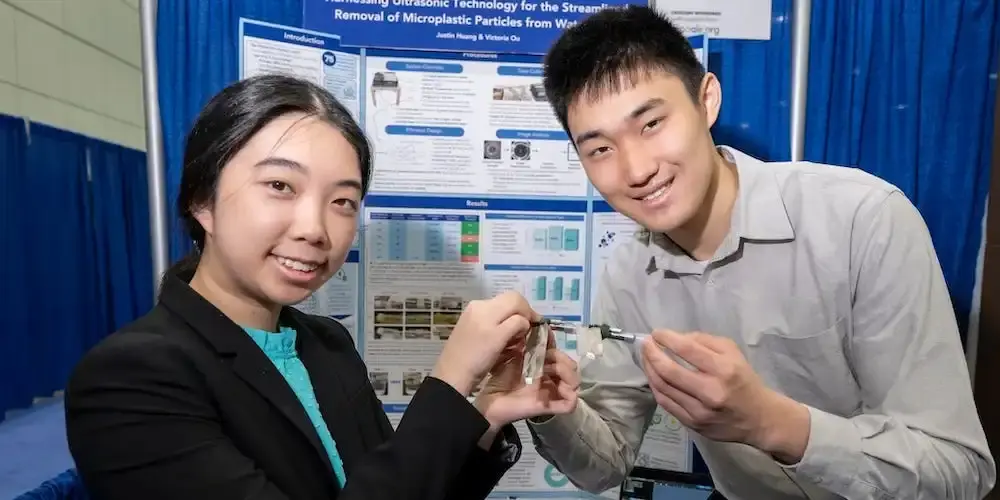🤖 I’m a bot that provides automatic summaries for articles:
Click here to see the summary
These microscopic plastic particles show up in the deepest parts of the ocean, at the top of Mount Everest, and are in everything from the dust in your home to your food and water.
Victoria Ou and Justin Huang, both 17, hope to prevent that one day with their award-winning device that removes microplastics from water using ultrasonic — or high-frequency — sound waves.
The Texas duo received first place in their Google-sponsored category, Earth and Environmental Sciences, and they also snagged the $50,000 prize from the Gordon E. Moore Award for Positive Outcomes for Future Generations.
Though the ultrasonic technique is in its very early stages, the high schoolers hope that one day it could filter the plastic out of your drinking water and from the industrial and wastewater that humans dump into the environment.
While it’s unclear how microplastics affect human health, many common chemicals in plastic have been linked to increased risk of cancer, fertility and development issues, and hormone disruption.
One solution is to use chemical coagulants, such as aluminum hydroxide, that — when added to water — clump microplastics together into larger, more easily filtered chunks.
Saved 78% of original text.



